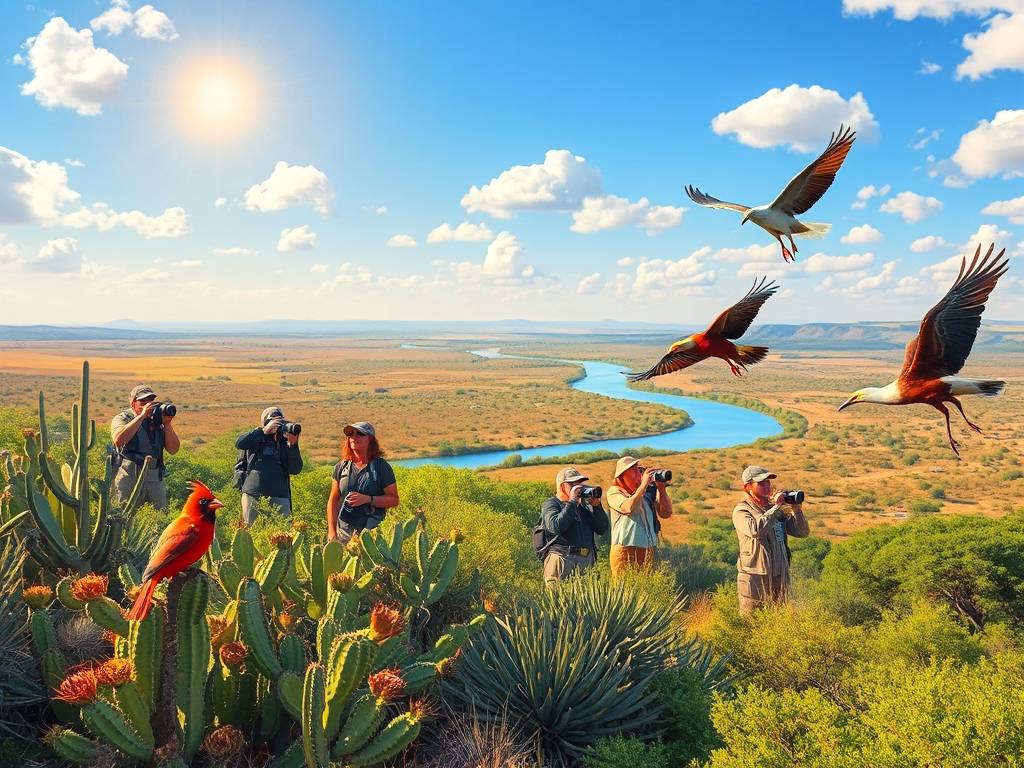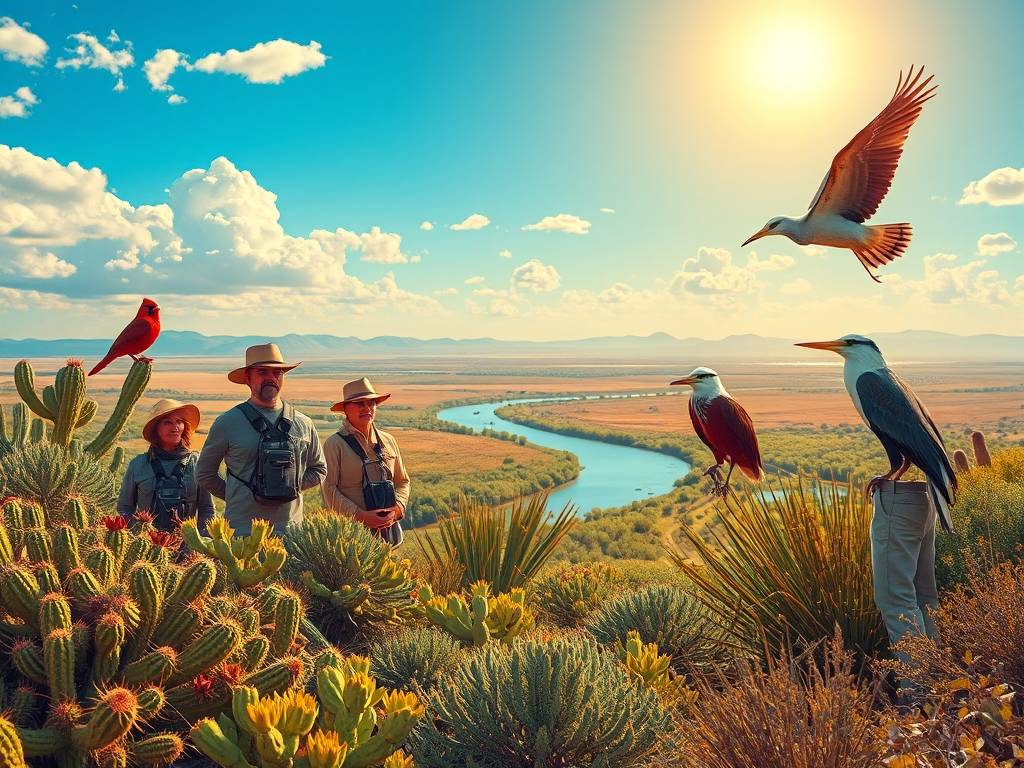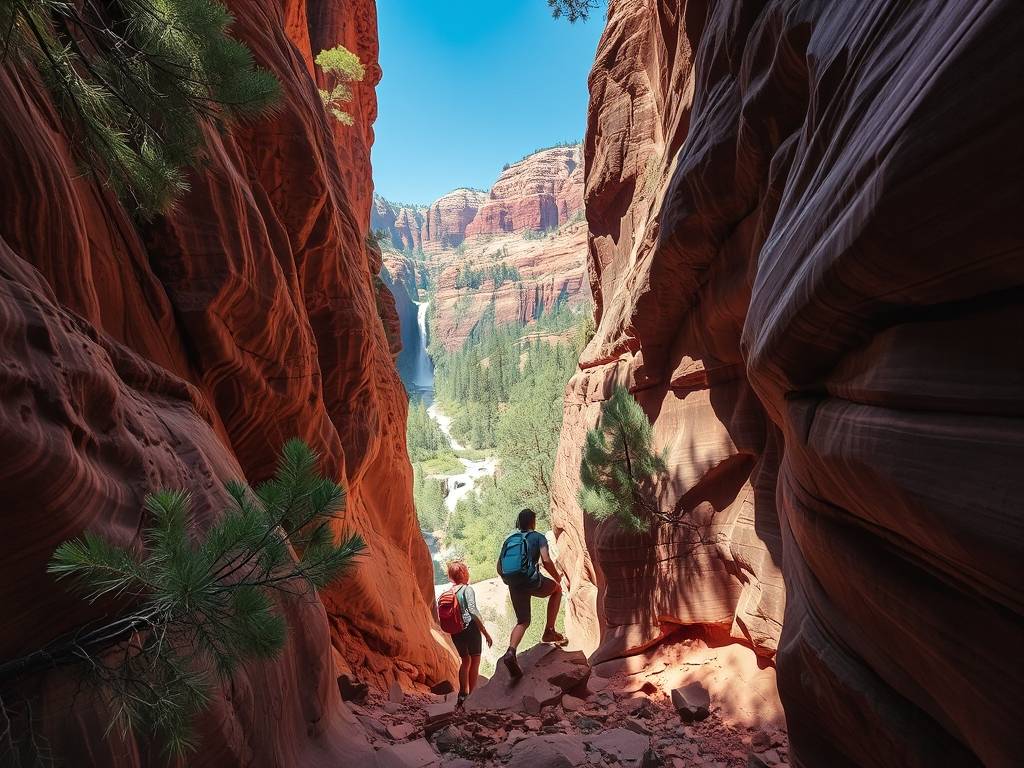USA Travel
US Travel: Birding in Texas’s Rio Grande Valley
Wings Over the Valley: Your Ultimate Birding Adventure in the Rio Grande Valley
There's a special kind of magic that happens when you stand quietly in the early morning light, binoculars in hand, listening to a symphony you can't find anywhere else. A sharp whistle, a melodic trill, the rustle of wings in the sabal palm—this is the soundtrack of the Rio Grande Valley in deep South Texas. For birdwatchers, from the avid life-lister to the curious beginner, this region isn't just a destination; it's a pilgrimage.
Tucked into the southernmost tip of Texas, the Rio Grande Valley (or RGV, as it's affectionately known) is a world unto itself. It’s a place where the temperate north meets the tropical south, creating a unique ecological crossroads. This convergence of two biological zones makes the valley one of the premier birding hotspots in the entire United States. Why? Because here, you can find species that are virtually impossible to see anywhere else in the country. We're talking about a birding experience filled with brilliant colors, exotic calls, and the thrill of the unexpected.

Why the RGV is a Birder's Paradise
The secret lies in the geography and the habitat. The Rio Grande River acts as a lifeline, carving through a landscape of thornscrub, resacas (ancient oxbow lakes), and lush riparian zones. This "river of life" provides a crucial corridor for wildlife, especially birds. Furthermore, the valley is the northernmost range for many Central American species. Birds like the dazzling Green Jay, the comical Greater Roadrunner, and the elusive Altamira Oriole don’t bother flying further north; they’ve found their Eden right here.
This has led to the establishment of a world-class network of birding sites and nature reserves. The Santa Ana National Wildlife Refuge is often called the "crown jewel" of the National Wildlife Refuge System. Walking its trails is like stepping into a tropical jungle. The chorus of Plain Chachalacas echoes through the canopy, and with a little patience, you might be rewarded with a sighting of a Hook-billed Kite or a roosting flock of brilliant Green Parakeets. It’s a must-visit for any Rio Grande Valley birding itinerary.
Just down the road, the Edinburg Scenic Wetlands offers a different, but equally rewarding, experience. This beautifully maintained urban oasis features ponds and wetlands that attract a stunning variety of waterfowl, shorebirds, and dragonflies. It’s a fantastic place for photography and for those who prefer easy, accessible trails without sacrificing the quality of bird sightings.
But perhaps the most famous resident of the RGV is a bird that draws enthusiasts from across the globe: the Elusive Green Kingfisher. While its larger relative, the Belted Kingfisher, is common across North America, the Green Kingfisher is a shy, jewel-like bird that prefers the quiet banks of the Rio Grande's resacas. Spotting its emerald-green back and rapid, low flight over the water is a true badge of honor for any birder visiting the region.
Planning Your Ultimate Texas Birding Trip
So, you're convinced. Now, how do you plan the perfect birding trip to the Rio Grande Valley?
When to Go: The valley is a year-round destination, but the experience changes with the seasons. The winter months (November through February) are pleasant and teem with migratory waterfowl and sparrows. The spring (March and April) is a frenzy of northbound migration, with warblers, tanagers, and buntings stopping to refuel. However, for the most unique experience, consider the summer. It's hot, but it's the best time to see tropical specialty birds nesting, including the stunning Buff-bellied Hummingbird and the noisy Brown Jay.
Where to Stay: The cities of McAllen, Harlingen, and Weslaco serve as excellent hubs. You’ll find a range of accommodations, and many are within a short drive of the major birding spots. For a more immersive experience, look into eco-lodges or B&Bs that cater specifically to nature tourists.
Your Essential Birding Packing List:
- Optics: A good pair of binoculars is non-negotiable. A spotting scope is incredibly useful for waterfowl and shorebird viewing at places like the South Padre Island Birding and Nature Center.
- Field Guide: A regional field guide or an app like eBird or Merlin Bird ID is indispensable for identifying the many new species you'll encounter.
- Comfort: Lightweight, breathable clothing in neutral colors is best. Don't forget a wide-brimmed hat, high-SPF sunscreen, and a reusable water bottle. The Texas sun is relentless.
- Footwear: Comfortable, closed-toe walking shoes are essential for navigating trails.
Finding the Valley's Feathered Gems: A Practical Approach
The key to successful birding in the RGV is to "think like a bird." They need food, water, and shelter. Focus on areas with a water source, dense vegetation for cover, and berry-producing trees.
One of the most effective strategies is to visit the series of "World Birding Centers." This network of nine distinct sites spans the entire valley, each offering a different habitat and a unique bird list. From the coastal marshes of the South Padre Island Birding and Nature Center (famous for its incredible boardwalk and "warbler fallout" during migration) to the thornscrub of Bentsen-Rio Grande Valley State Park, you could spend a week just hopping between these premier locations.
Don't overlook the power of patience. Find a comfortable seat at a water feature, like the one at the Frontera Audubon Thicket in Weslaco, and just wait. This is often when the magic happens—when shy forest birds like the White-tipped Dove or the Long-billed Thrasher venture out for a drink or a bath.
And let's talk about one of the most thrilling aspects: the "specialties." These are the birds that are the primary targets for many visitors. Your "most-wanted" list might include:
- The Green Jay: A riot of green, blue, and yellow that looks like it flew out of a child's painting.
- The Altamira Oriole: With its deep orange plumage and a powerful, musical song, spotting one is a moment you won't forget.
- The Plain Chachalaca: A noisy, gregarious bird that looks like a prehistoric pheasant and is often seen clambering through trees.
- The Great Kiskadee: A bold, flycatcher with a striking black-and-white head and a call that sounds like its name.
Beyond the Birds: Embracing the Full RGV Experience
While the birds are the main attraction, the Rio Grande Valley offers a rich cultural tapestry that enhances any visit. Take a break from the trails to explore the charming towns. Enjoy authentic Tex-Mex cuisine—a plate of sizzling fajitas or a breakfast of migas and beans is the perfect fuel for a day of exploration. The blend of American and Mexican cultures is palpable and adds a wonderful depth to your travel experience.
Remember, you are a guest in this delicate ecosystem. Practice ethical birding by keeping a respectful distance from nests, not using playback calls excessively to attract birds, and staying on designated trails. Pack out all your trash and support the local conservation efforts by paying entrance fees to the refuges and parks. These funds are vital for preserving this incredible place for the birds and for future generations of birders.
Your adventure in the Rio Grande Valley is more than just a checklist. It's about the warmth of the sun on your face, the sweet scent of huisache in bloom, the sound of a thousand blackbirds coming in to roost at dusk, and the shared smiles with fellow birders when a rare species makes an appearance. It’s a journey that will leave you not just with a longer life list, but with a heart full of memories and a renewed sense of wonder for the natural world. So pack your bags, grab your binoculars, and get ready to discover the winged wonders of the Rio Grande. Your ultimate birding adventure awaits.

相关文章
- US Travel: Snowshoeing in Maine’s Baxter State Park
- US Travel: Hiking in Tennessee’s Great Smoky Mountains
- US Travel: Paddleboarding in Texas’s Lake Travis
- US Travel: Rafting in West Virginia’s New River Gorge
- US Travel: Canyoneering in Utah’s Zion National Park
- US Travel: Camping in Oregon’s Crater Lake National Park
- US Travel: Sailing in Massachusetts’s Cape Cod
- US Travel: Snorkeling in Hawaii’s Maui Molokini Crater
- US Travel: Hiking in Colorado’s Rocky Mountain National Park
- US Travel: Ice Climbing in New York’s Adirondack Mountains
发表评论
评论列表
- 这篇文章还没有收到评论,赶紧来抢沙发吧~


